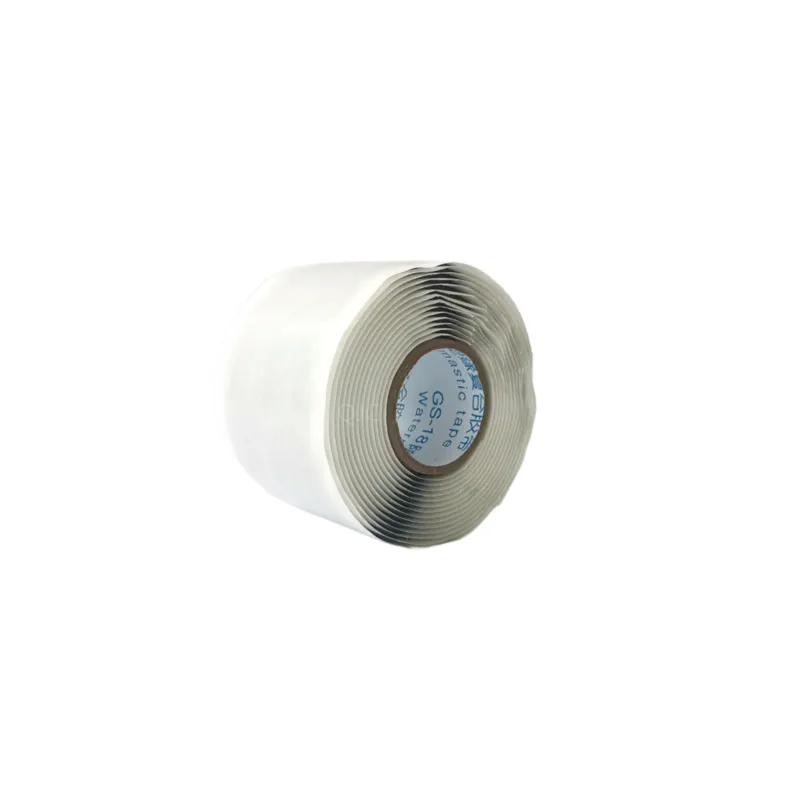The Importance of Rubber Tape in Electrical Applications
In the modern world, electrical systems and safety are paramount. As technology continues to advance, the demand for reliable and efficient solutions grows, especially in the field of electrical insulation and protection. One product that has proven invaluable in these applications is rubber tape. With its unique properties and versatile uses, rubber tape has become an essential tool for electricians and professionals alike.
Rubber tape, often referred to as electrical tape, is made from a blend of rubber and an adhesive material that enhances its insulating properties. Unlike traditional vinyl electrical tape, rubber tape is designed to withstand higher temperatures and offers superior flexibility, allowing it to conform to various shapes and sizes. This characteristic makes it ideal for wrapping around wires, cables, and connections, ensuring that they remain securely insulated and protected from environmental factors.
Key Properties
One of the standout features of rubber tape is its excellent electrical insulation capability. It can handle voltages up to 600 volts, which makes it suitable for a wide range of applications, from household wiring to industrial machinery. Moreover, its high dielectric strength makes it effective in preventing electrical leakage, reducing the risk of short circuits and electrical fires.
Another important aspect of rubber tape is its resistance to moisture, chemicals, and UV rays. This makes it particularly useful in outdoor applications or environments where exposure to the elements is a concern. For instance, when wrapping connections in outdoor lighting systems or garden equipment, rubber tape ensures that the wires remain protected and functional, regardless of weather conditions.
Versatility in Application
Rubber tape is not solely used for electrical connections. Its versatility extends to a variety of applications, including
1. Bundling Wires Rubber tape can be used to group and secure multiple wires together neatly. This prevents tangling and makes it easier to manage complex wiring systems both at home and in industrial environments.
2. Splicing Wires When joining two wires, rubber tape can provide a reliable and insulated connection. By wrapping the spliced area, it safeguards against moisture and prevents the wires from fraying.
rubber tape electrical

3. Repairing Damaged Insulation If the insulation on a wire is compromised, rubber tape acts as an excellent temporary solution. By wrapping the affected area, it restores insulation until a more permanent repair can be made.
4. Sealing Electrical Connections Rubber tape can be wrapped around connectors and terminals to provide protection against moisture and dust. This is particularly important in outdoor setups where exposure to rain and debris can lead to connector failure.
Installation Tips
Using rubber tape effectively requires some attention to detail. Here are a few tips to ensure optimal performance
- Clean the Surface Before applying rubber tape, it’s essential to clean the surface of the wires or connections. Remove any dirt, grease, or moisture to ensure proper adhesion.
- Overlap the Tape When wrapping, make sure to overlap the tape by about half of its width for maximum insulation and protection.
- Stretching the Tape When applying rubber tape, stretch it slightly as you wrap it around the wire. This ensures that the tape adheres well and provides a tight seal.
- Finish with a Secure End Once the wrapping is complete, press down the end of the tape firmly to ensure it stays in place and does not unravel.
Conclusion
Rubber tape is a vital component in the electrical industry, providing robust insulation and protection for various applications. Its adaptability, combined with superior electrical properties, makes it an indispensable tool for professionals. Whether used for insulating wires, repairing connections, or bundling cables, rubber tape continues to play a significant role in keeping electrical systems safe and functional. Its importance cannot be overstated, as it contributes directly to the overall safety and efficiency of electrical installations. As technology evolves, innovations in materials may enhance this trusty product further, but its fundamental purpose will always remain critical.
-
XIANGFAN Rubber Tape-Ultimate Solutions for All Your Insulation NeedsNewsJun.24,2025
-
XIANGFAN Rubber Tape-Protection for Industrial and Residential ApplicationsNewsJun.24,2025
-
XIANGFAN Rubber Tape: Superior Safety and Sealing for Demanding EnvironmentsNewsJun.24,2025
-
XIANGFAN Rubber Tape: Reliable Solutions for Every Electrical ChallengeNewsJun.24,2025
-
XIANGFAN Electrical & Industrial Tape: Powering Reliability Across IndustriesNewsJun.24,2025
-
XIANGFAN Electrical & Industrial Tape: Excellence in Every ApplicationNewsJun.24,2025
